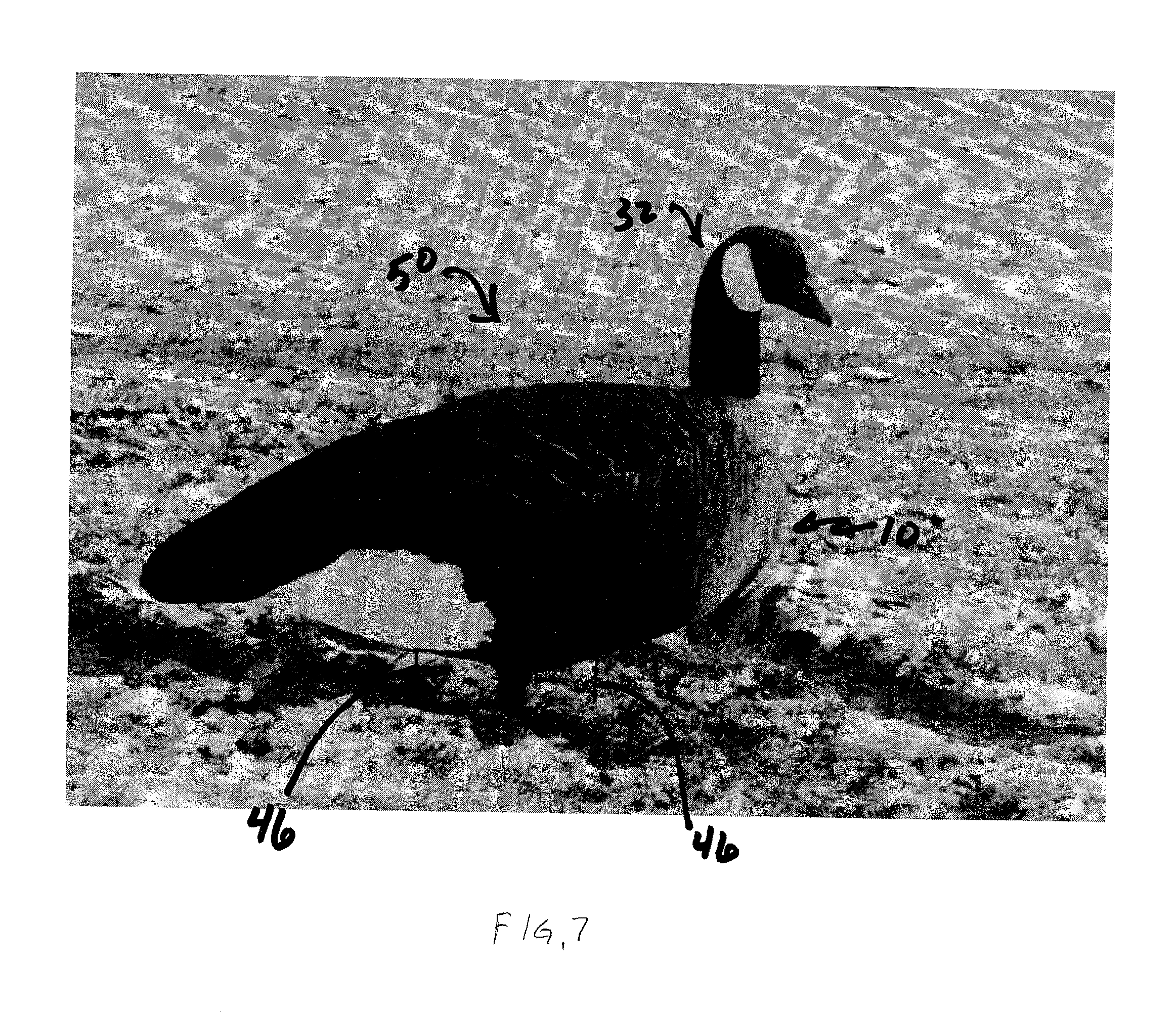Silhouette Decoy With Three-Dimensional Head
- Summary
- Abstract
- Description
- Claims
- Application Information
AI Technical Summary
Benefits of technology
Problems solved by technology
Method used
Image
Examples
Embodiment Construction
[0019]Referring now to the drawings and more particularly FIG. 1, it can be seen that a two-dimensional decoy base employed with an embodiment of the invention is designated generally by the numeral 10. As will become apparent herein, the decoy of the invention is shown and described in the context of a waterfowl, and more particularly a Canada goose, while it will be appreciated that similar decoys for any of various birds or mammals may be employed. The decoy base 10 includes a breast section 12, a tail section 14, wing section 16, and body section 18. A truncated leg section 20 depends from a lower edge thereof. It will be appreciated that the decoy base 10 provides the silhouette of the goose or other animal, rather than a three-dimensional replication thereof.
[0020]The thickness of the base portion 10 is apparent from reference to FIG. 2 where it can be seen that the silhouette two-dimensional decoy base 10 is constructed of a corrugated material 22. According to a preferred em...
PUM
 Login to View More
Login to View More Abstract
Description
Claims
Application Information
 Login to View More
Login to View More - R&D
- Intellectual Property
- Life Sciences
- Materials
- Tech Scout
- Unparalleled Data Quality
- Higher Quality Content
- 60% Fewer Hallucinations
Browse by: Latest US Patents, China's latest patents, Technical Efficacy Thesaurus, Application Domain, Technology Topic, Popular Technical Reports.
© 2025 PatSnap. All rights reserved.Legal|Privacy policy|Modern Slavery Act Transparency Statement|Sitemap|About US| Contact US: help@patsnap.com



